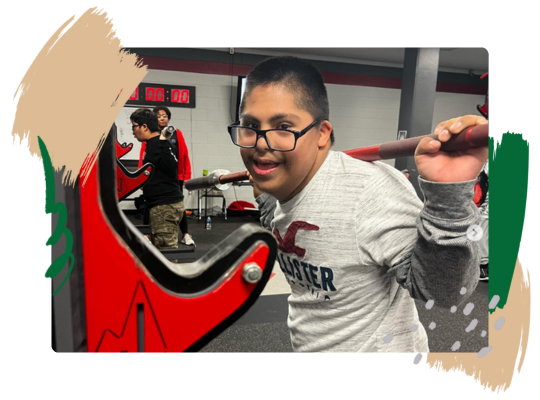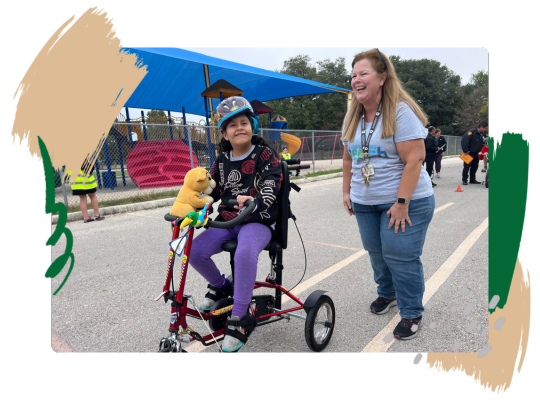
North East ISD’s Buddy Blizzard
At North East ISD, they let kids be kids. That’s one of the goals of Encino Park Elementary School’s Buddy Blizzard. The Alternative Learning Environment

* Campaign (Go Public)

Find Texas Schools and Independent School Districts
Special Education is a general term used to describe the law’s requirement of specially designed curriculum for children with disabilities. These services are provided by public schools and are free of charge.

A member of the Judson ISD Special Olympics team lifts weights.
Early identification and intervention are crucial for supporting children with disabilities. Special education services help children reach their full potential. In Texas, families have access to Early Childhood Intervention (ECI) services from birth to age three, providing vital support and resources to kickstart their child’s developmental journey.
Parents can take crucial steps to support their child’s unique needs, recognize signs that may indicate the need for specialized assistance, and understand the qualifications necessary to receive special education services.

An NEISD student uses an adaptive PE bike.
If you are worried about your child (age 2 years 9 months – 20 years) falling behind their peers or if your child’s doctor suggests special needs school services, take action.
Early Childhood Intervention and seamless school transitions play a pivotal role in ensuring that children with special needs receive the support they need from an early age to continue to thrive as they transition into different educational settings.
ARD (Admission, Review, and Dismissal) meetings and additional special education resources are available to support children with diverse learning needs.
Understanding Individualized Education Programs (IEPs) is essential for parents navigating the landscape of special education services for children with unique learning needs.
The identification process for neurodiversity, autism, and special services is available to support children in their educational journey.
Here’s a quick video of what students learn in Special Education Programs. Traditional public schools provide many different types of special education services.

At North East ISD, they let kids be kids. That’s one of the goals of Encino Park Elementary School’s Buddy Blizzard. The Alternative Learning Environment

Gratitude to the Harlandale ISD Special Education Department for fostering inclusivity through a spirited Special Olympics flag football game, uniting middle school students in friendly

Santa Fe ISD’s Special Olympic athletes traveled to Alvin to compete in their Area basketball tournament. Santa Fe players did an amazing job competing and

The Judson ISD Special Olympics team, the Thunder-Rockets, had many accomplishments this past year. Amy Paul works for Judson ISD as a District Adaptive PE

Edgewood ISD Installs Wheelchair Swings F.D. Roosevelt Elementary School students soar! An Edgewood ISD innovation grant provided brand new wheelchair swings on campus. All students
© Copyright 2023 – We Go Public – All Rights Reserved

If you want to take advantage of this benefit or learn more about how a membership can help your organization please click the button below.